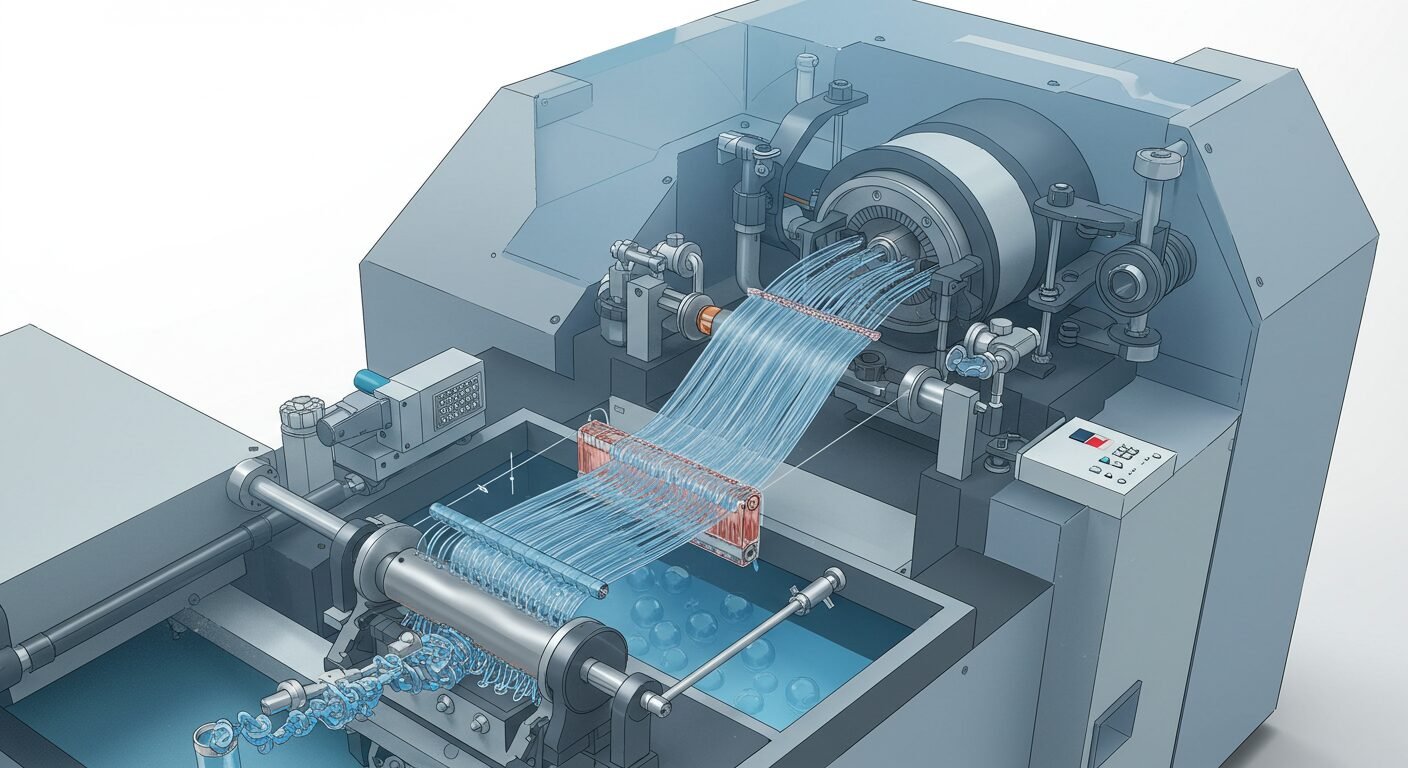In today’s world of rapid industrial development and growing environmental concerns, efficient and scalable filtration technologies have become more essential than ever. Among the most critical components driving innovation in filtration, water treatment, gas separation, and medical applications is the hollow fiber membrane—and at the heart of manufacturing these sophisticated membranes lies the hollow fiber membrane spinning machine.
In this blog post, we’ll explore what hollow fiber membranes are, the significance of spinning technology, how hollow fiber membrane spinning machines work, and the industries benefiting from this advanced machinery.
What is a Hollow Fiber Membrane?
A hollow fiber membrane is a type of synthetic membrane shaped like a very thin tube or straw, with a diameter ranging from a few micrometers to a few millimeters. These membranes are used in various filtration and separation processes due to their high surface-area-to-volume ratio, mechanical strength, and permeability.
Common applications include:
- Water and wastewater treatment
- Hemodialysis and other medical filtration
- Gas separation (e.g., oxygen/nitrogen generation)
- Food and beverage processing
- Pharmaceutical purification
The Need for Precision: Why Spinning Machines Matter
The performance and efficiency of hollow fiber membranes largely depend on their pore size, porosity, wall thickness, uniformity, and material properties. Achieving the optimal balance between these characteristics requires a high degree of manufacturing precision—which is exactly what hollow fiber membrane spinning machines provide.
These machines are responsible for producing continuous fibers with controlled geometries and consistent properties, directly impacting the quality and application range of the membranes produced.
What is a Hollow Fiber Membrane Spinning Machine?
A hollow fiber membrane spinning machine is a specialized piece of equipment designed to manufacture hollow fiber membranes using processes like phase inversion, melt spinning, or dry-jet wet spinning. These machines typically consist of several integrated systems:
- Dope and bore fluid preparation systems
These prepare the polymer solution (dope) and bore liquid required for membrane formation. - Spinning head (spinneret)
A precision nozzle that extrudes the dope and bore fluid simultaneously, forming a hollow fiber. - Quenching or coagulation bath
The emerging fiber is submerged in a bath (often water or solvent) where phase separation solidifies the membrane structure. - Take-up rollers and winding system
The fibers are stretched, washed, and collected onto spools in a controlled manner. - Control systems
Modern machines include programmable logic controllers (PLC), data acquisition systems, and quality monitoring to ensure consistency.
Spinning Techniques in Hollow Fiber Membrane Production
There are several spinning techniques, each suited for different types of membranes and applications:
- Wet Spinning
The dope solution is extruded directly into a coagulation bath where phase separation occurs immediately. This is ideal for membranes that require a high degree of porosity and flexibility.
- Dry-Jet Wet Spinning
The fiber travels a short air gap before entering the coagulation bath. This technique provides better control over the fiber morphology and is often used for high-performance ultrafiltration or gas separation membranes.
- Melt Spinning
In this method, thermoplastic polymers are melted and extruded without solvents. It’s commonly used in textile fiber production but less frequently for separation membranes due to its limited porosity control.
Key Features of Modern Hollow Fiber Spinning Machines
Modern spinning machines offer a range of features that enhance production quality and efficiency:
- Automation and Digital Controls
Real-time monitoring of spinning parameters such as flow rates, temperature, and pressure. - Multi-capillary spinnerets
Capable of producing hundreds of fibers simultaneously, significantly increasing throughput. - Customizable module design
Allows for flexible production to meet different membrane configurations and polymer types. - High-precision dosing systems
Ensures accurate and consistent feed of polymer and bore fluids, reducing material waste. - Online quality control
Optical sensors and tension monitors detect inconsistencies before the fiber is collected.
Industrial Applications and Demand Drivers
The demand for hollow fiber membrane spinning machines is rapidly growing across a variety of industries:
Water and Wastewater Treatment
Reverse osmosis (RO), ultrafiltration (UF), and microfiltration (MF) membranes are key to addressing water scarcity and pollution. The ability to mass-produce reliable hollow fiber membranes is critical for municipal and industrial water treatment plants.
Medical Industry
Hollow fiber membranes are the core components of dialyzers used in hemodialysis. Spinning machines must meet stringent pharmaceutical-grade standards to ensure patient safety.
Energy and Environmental Sectors
Gas separation membranes are vital in CO₂ capture, hydrogen purification, and biogas upgrading. Hollow fiber membrane spinning machines enable the scalable production of high-performance membranes for these green technologies.
Food and Beverage
Membranes help in protein concentration, juice clarification, and dairy processing. Machines must ensure cleanliness, consistency, and compliance with food safety standards.
Challenges in Hollow Fiber Membrane Spinning
Despite technological advances, manufacturers still face challenges, including:
- Maintaining uniformity at scale
- Managing the complexity of multi-layered or composite membranes
- Adapting to new polymer materials
- Balancing production speed with quality control
R&D efforts continue to improve spinning head designs, optimize polymer formulations, and develop AI-driven monitoring systems to address these issues.
Future Trends and Innovations
The future of hollow fiber membrane spinning technology is promising, with key trends including:
- Sustainable production: Use of biodegradable polymers and solvent recovery systems.
- Miniaturized spinning units: For lab-scale R&D and rapid prototyping.
- Smart spinning lines: Integration of AI and machine learning for predictive maintenance and quality assurance.
- Customization at scale: Tailoring fiber morphology to niche applications like drug delivery or nanoscale filtration.
The hollow fiber membrane spinning machine is not just a piece of industrial equipment—it’s a cornerstone of modern filtration technology. Its ability to produce high-precision, high-performance membranes underpins critical applications across water treatment, healthcare, energy, and beyond.
As global demand for clean water, renewable energy, and advanced medical treatments grows, so too does the importance of reliable, efficient, and innovative spinning machines. For manufacturers and researchers alike, investing in advanced membrane spinning technology is a decisive step toward a cleaner, healthier, and more sustainable future.




